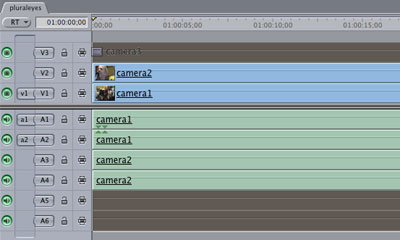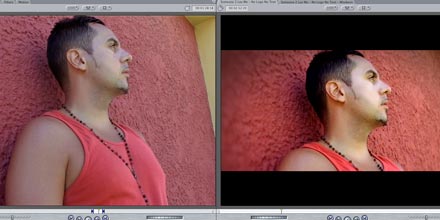Garage bands before the boy bands
As an editor, I’ve enjoyed the many music-oriented video productions I’ve worked on. In fact one of my first feature films was a concert film highlighting many top Reggae artists. Along the way, I’ve cut numerous jazz concerts for PBS, along with various videos for folks like Jimmy Buffet and the Bob Marley Foundation.
We often think about the projects that “got away” or never happened. For me, one of those was a documentary about the “garage band” acts of central Florida during the 1960s. These were popular local and regional acts with an eye towards stardom, but who never became household names, like Elvis or The Beatles. Central Florida was a hot bed for such acts back then, in the same way as San Francisco, Memphis, or Seattle have been during key moments in rock ‘n roll history.
For much of the early rock ‘n roll era music was a vertically-integrated business. Artist management, booking, recording studios, and marketing/promotion/distribution were all handled by the same company. The money was made in booking performances more so than record sales.
Records were produced, especially 45RPM “singles”, in order to promote the band. Singles were sent for free to radio stations in hopes that they would be placed into regular rotation by the station. That airplay would familiarize listeners/fans with the bands and their music. While purchasing the records was a goal, the bigger aim was name recognition, so that when a band was booked for a local event (dance, concert, youth club appearance, tour date) the local fans would buy tickets and show up to the event. Naturally some artists broke out in a big way, which meant even more money in record sales, as well as touring.
Record labels, studios, recording studios, and talent booking services – whether the same company or separate entities – enjoyed a very symbiotic relationship. Much of this is chronicled in a mini-doc I cut for the Memphis Rock ‘n Soul Museum. It highlighted studios like Sun, Stax, and Hi and their role in the birth of rock ‘n roll and soul music.
In the central Florida scene, one such company was Bee Jay, started by musician/entrepreneur Eric Schabacker. Bee Jay originally encompassed a booking service and eventually a highly regarded recording studio responsible for many local acts. Many artists passed through those studio doors, but one of the biggest acts to record there was probably Molly Hatchet. I got to know Schabacker when the post facility I was with acquired the Bee Jay Studios facility.
Years later Schabacker approached me with an interesting project – a documentary about the local garage bands on the 60s. Together with a series of interviews with living band members, post for the documentary would also involve the restoration of several proto-music videos. Bee Jay had videotaped promotional videos for 13 of the bands back in the day. While Schabacker handled the recording of the interviews, I tackled the music videos.
The original videos were recorded using a rudimentary black-and-white production system. These were recorded onto half-inch open reel videotape. Unfortunately, the video tubes in the cameras back then didn’t always handle bright outdoor light well and the video switcher did not feature clean vertical interval switching. The result was a series of recordings in which video levels fluctuated and camera cuts often glitched. There were sections in the recordings where the tape machine lost servo lock during recording. The audio was not recorded live. Instead, the bands lip-synced to playback of their song recordings, which was also recorded in sync with the video. These old videos were transferred to DV25 QuickTime files, which formed my starting point.
Step one was to have clean audio. The bands’ tunes had been recorded and mixed at Bee Jay Studios at the time into a 13-song LP that was used for promotion to book those bands. However, at this point over three decades later, the master recordings were no longer available. But Schabacker did have pristine vinyl LPs from those session. These were turned over to local audio legend and renowned master engineer, Bob Katz. In turn, he took those versions and created remastered files for my use.
Now that I had good sound, my task was to take the video – warts and all – and rebuild it in sync with the song tracks, clean up the video, get rid of any damage and glitches, and in general end up with a useable final video for each song. Final Cut Pro (legacy) was the tool of choice at that time. Much of the “restoration” involved the slight slowing or speeding up of shots to resync the files – shot by shot. I also had to repeat and slomo some shots for fit-and-fill, since frames would be lost as glitchy camera cuts and other disturbances were removed. In the end, I rebuilt all 13 into a presentable form.
While that was a labor of love, the down side was that the documentary never came to be. All of these bands had recorded great-sounding covers (such as Solitary Man), but no originals. Unfortunately, it would have been a nightmare and quite costly to clear the music rights for these clips if used in the documentary. A shame, but that’s life in the filmmaking world.
None of these bands made it big, but in subsequent years, bands of another era like *NSYNC and the Backstreet Boys did. And they ushered a new boy band phenomenon, which carries on to this day in the form of K-pop, among other styles.
©2022 Oliver Peters






 I spoke with Dermot Shane, a Vancouver-based VFX/DI supervisor who specializes in using Avid DS. Shane was working with 10.3.1 (in beta) when he got the call to handle finishing for “All Yours” (directed by Brantley Gutierrez). According to Shane, “The schedule on this was very tight and changes were being made up until the last minute. That’s because the video integrates clips from the movie and there had been a few last minute changes to the cut. In fact, we ended up getting one of these clips FTP’ed to us just in time for the deadline!” The production company for Metric shot the music video scenes using a RED One with the updated Mysterium-X sensor, which offers improved dynamic range. The newest RED software also improves how the camera raw files are converted into color information. These latest RED software updates have been integrated into the RED SDK used in Avid DS 10.3.1.
I spoke with Dermot Shane, a Vancouver-based VFX/DI supervisor who specializes in using Avid DS. Shane was working with 10.3.1 (in beta) when he got the call to handle finishing for “All Yours” (directed by Brantley Gutierrez). According to Shane, “The schedule on this was very tight and changes were being made up until the last minute. That’s because the video integrates clips from the movie and there had been a few last minute changes to the cut. In fact, we ended up getting one of these clips FTP’ed to us just in time for the deadline!” The production company for Metric shot the music video scenes using a RED One with the updated Mysterium-X sensor, which offers improved dynamic range. The newest RED software also improves how the camera raw files are converted into color information. These latest RED software updates have been integrated into the RED SDK used in Avid DS 10.3.1.
































